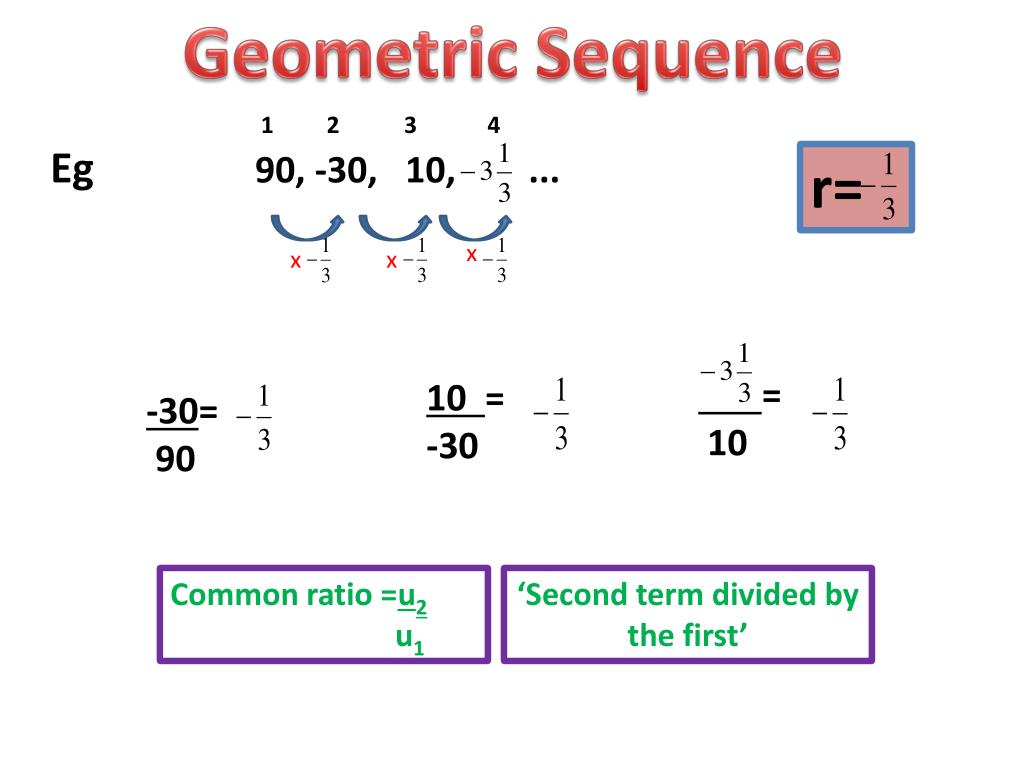
#GEOMETRIC SEQUENCES SERIES#
In mathematics, a geometric series is the sum of an infinite number of terms that have a constant ratio between successive terms. A geometric sequence is a sequence in which the ratio consecutive terms is constant. An arithmetic sequence is a sequence with. The total purple area is S = a / (1 - r) = (4/9) / (1 - (1/9)) = 1/2, which can be confirmed by observing that the unit square is partitioned into an infinite number of L-shaped areas each with four purple squares and four yellow squares, which is half purple. Some sequences are arithmetic or geometric, meaning they either change by some common difference or common ratio. And then I multiply 6 times the number 3, and I get 18.


So let's say my first number is 2 and then I multiply 2 by the number 3. Another geometric series (coefficient a = 4/9 and common ratio r = 1/9) shown as areas of purple squares. A geometric sequence is a special progression, or a special sequence, of numbers, where each successive number is a fixed multiple of the number before it.


 0 kommentar(er)
0 kommentar(er)
